





In a word: Shitty.
I empathize with those of you in Oklahoma this week where temperatures are colder than the north pole. I can’t imagine -28F being a usual thing for Okies. After I experienced -26F in South Dakota two years ago, I have nothing but empathy for you.
In December 2008 I drove with my brother from St Louis, Missouri to Spokane, Washington. Winter is a terrible time to go north, obviously, as temps drop to below-brutal and snowfall creates real and serious dangers for travelers. But, we didn’t have much of a choice. This was the only time we had off from school, so off we went.
I know you folks in Minnesota, Manitoba, and the interior parts of Alaska have probably seen temperatures far lower. But for me, someone born near the equator, this exceeds conditions where humans should be living. I can’t say I’m a fan of heat or humidity either. Maybe I’m just a wuss.
In 2008, Spokane had its fifth worst winter snowfall on record, and when I left Spokane and headed home I was greeted with the deadly, brutal gaze of what felt like Siberia.
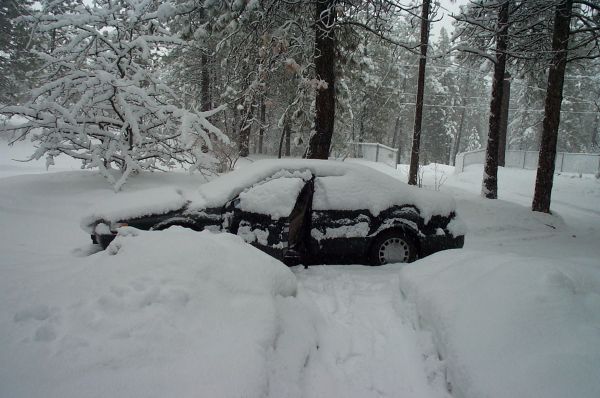
Almost couldn’t see my car when I peeped out the window.
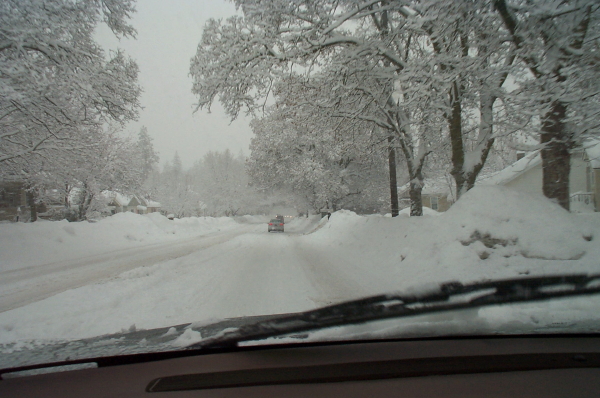
South Grand is supposed to have four lanes.
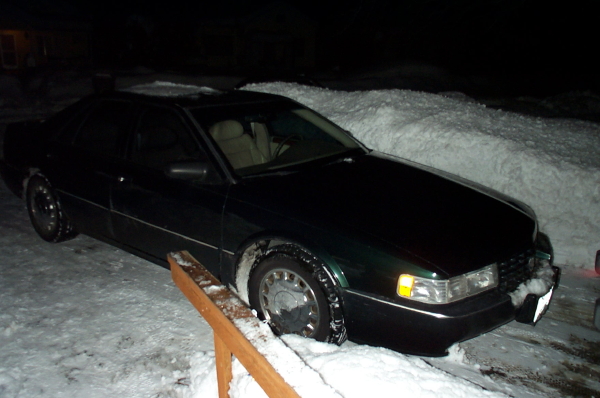
Parked at my friends house. He carved out a front yard parking space. You can see how high the snow is.
On the way home, we stopped in Rapid City, South Dakota to meet up with one of my brother’s friends from school.


I guess she was used to it. Rapid City is normally subjected to cold, harsh winters.
Total blindness from snow drifts and wind gusts make night time travel on I-90 especially dangerous. Take the worst fog you’ve ever seen, and double it.
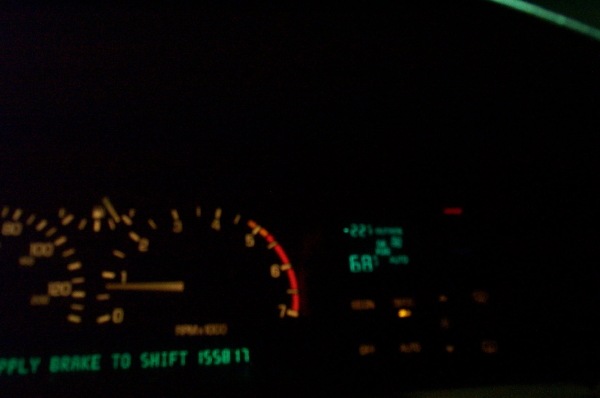
According to the 1992 Seville, -22F was the outdoor temperature. Never in my life have I seen a temperature readout so low.
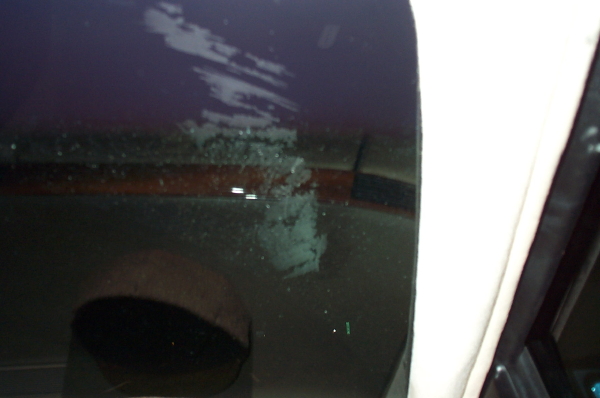
This is what happened when temps dropped to -26F somewhere east of Chamberlain SD.
The heat was doing its job admirably (new heater core was installed less than a year ago), but there was only so much it could do. Frost began to form inside the windshield and on the side windows. Brakes started to feel a bit crunchy, as if the brake lines were filled with chunks of ice. The engine maintained 201F according to the digital readout, but I could tell the car wanted it to be over. Remarkably, the road surface still had reasonable traction.
There was hardly anyone on the road. It was approaching midnight and most big rigs and travelers were in their cabs or in motel rooms, struggling to stay warm.
I pulled into a gas station to fill up. The display on the pump was barely readable because the liquid crystals had nearly frozen. Gas flowed at an agonizingly slow pace. The pumping mechanism whined and groaned like a teenager being asked to wake up on Sunday morning. It was if I was filling my tank with a thick gelatinous substance.
I stood there shaking like a wet dog, waiting eagerly for the tank to fill up. I could feel the boogers and hairs in my nose freeze as wind gusted through. My eyes burned and my fingertips ached. All this in only a couple minutes!
Gasoline itself doesn’t freeze until -40F, so I still had a buffer of 14 degrees before the contents of my fuel tank turned into a solid brick. Various hydrocarbons in gasoline freeze at different temperatures, and its ability to flow will be reduced as it approaches freezing.
The Seville was running on standard 10W-30 motor oil, not a blend or full synthetic. The pour point for standard 10W30 is -20F, so I was already beyond a safe threshold at -26. If I was to stop overnight and sleep, I’d run a risk of not being able to start my car in the morning, so I had no choice but to keep going.
At a lower enough temperature, the waxes and paraffins in motor oil turn into a honey-like gel and the oil ceases to be a useful lubricant. Mobil 1 synthetic has a pour point of of below -40F.
Watch the video to see the dramatic difference:
Fast Tube by Casper
Skip to 1:50
Imagine your motor, in the dead of winter, after being parked outside and letting most of the oil flow back into the pan, trying to start in conditions like this. Imagine the friction and damage from a lack of lubrication.
Alaskans and other cold-weather dwellers know to pack their cars with emergency blankets, spare parts, and tool kits. A frequent way natives in Alaska die is from getting drunk and wandering around outside, passing out and dying in the cold. Here’s a how-to guide on traveling through Alaska.
I’ll reiterate what I said at the beginning: -26F feels shitty.
Last time it was -22F in Spokane my younger brother tried to add oil to his ’94 Acclaim and came in asking if I had any oil because the stuff in the garage was “jello”. I told him that’s exactly how the oil in his oilpan looked. He wasn’t impressed. 😉
You said you were driving a 92 STS yet your picture shows a Northstar badge. What gives? The STS didn’t get the Northstar until 1993?
KRSTS, the last owner added that stupid badge when he had the car (he had a ’94 parts car that he took it off of). I removed the badge later on after Jesda sold me this car.
that video was badass lol
Where did you all go in south dakota, just rapid??
We saw about 3 weeks of temps that never got above -10, I think the lowest I saw this year was -30* air temp and -45 windchill. I remember when I was real young, seeing -38* air temps and -57* windchills, but I think they have re-done how they calculate windchills since then.
Either way, ITS COLD!
Headed up to Washington to see friends and family and passed through SD. I think if I head up in the winter again I’ll take I-70 and risk the mountains in Utah.
if you took I90 through SW MN too, you probably drove right past my house lol